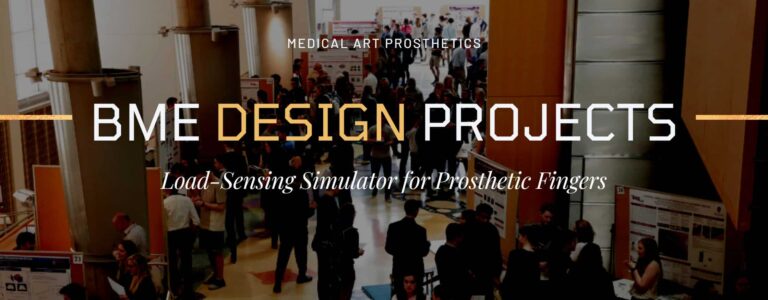Silicone ear prostheses are created and provided to individuals born with microtia, suffered loss of an ear due to cancer, or trauma patients who have sustained amputation of the ear. Current attachments utilize chemical bonding with a primer to attach a magnet to silicon. This can cause an early attachment failure due to minimal mechanical attachment. Patients travel a great distance for the specialized prosthetic results of Medical Art Prosthetics, so a stronger method of attachment is desired to improve retention and durability of the prosthesis. The goal is to develop multiple attachment designs, fabricate 3D models, and perform testing.
Medical Art Prosthetics: Prosthetic ear attachment anchor
Product Design Specifications | September 22, 2017
Client: Mr. Greg Gion
Advisor: Doctor Naomi Chesler, Ashley Mulchrone
Team: Cristian Naxi – cnaxi@wisc.edu (Team Leader)
Joseph Campagna – jcampagna@wisc.edu (Communicator)
Kinzie Kujawa – kujawa2@wisc.edu (BSAC)
Anna Samuelsohn – asamuelsohn@wisc.edu (BPAG)
Mitchell Glodowski – mglodowski@wisc.edu (BWIG)
Client Requirements:
- Device should be incorporated into existing prosthetic ear design
- Device should not be visible through the silicone prosthesis
- Budget of $500
Design requirements:
- Physical and Operational Characteristics
- Performance requirements: The device must increase prosthetic ear lifetime to two years under normal use. Prostheses are typically removed once per day for cleaning with a breakaway force of 4 N.
- Safety: The device should not have any sharp edges where the user could cut themselves.
- Accuracy and Reliability: The device should secure the magnetic clip to the silicone ear. It should not come off the prosthetic ear when users take off the ear.
- Life in Service: The prosthesis will ideally be worn everyday except while sleeping and doing rigorous exercise. Since prosthetic ears usually get replaced every two years, the attachment should last for two years minimum.
- Shelf Life: The ear attachment should be kept in a cool dry space, considering the metal components of the design.
- Operating Environment: The attachment needs to withstand 200℉ during the molding process. The attachment must withstand the humidity and be corrosion resistant once it’s attached to the patient.
- Ergonomics: The attachment needs to last two years under normal use conditions. The product should allow more force to be applied on the magnets without causing the prosthesis to rip or straining the skull abutments.
- Size: The device should be small enough that it fits on the ear without showing. It should also be able to fit around the following magnets from Factor II: Mini M1-S, Midi M2-S, Maxi ME-S, and Auricular MLL3-OR-S. The client would like if the product is grindable (able to be filed down) so it can fit differently sized ears.
- Weight: The device should weigh less than five grams. A weight larger than five may make the silicone ear too heavy and uncomfortable for the user.
- Materials: The device should be made of metal or plastic that will withstand the molding process of the prosthesis.
- Aesthetics, Appearance, and Finish: T he device should be either transparent, the same color as the prosthesis, or small enough so that it can not be seen through the silicone of the prosthesis.
- Production Characteristics
- Quantity: One working prototype is required for testing.
- Target Product Cost: The product development should cost no more than $500. The cost to produce the anchor is projected to be less than $10. If the attachment has the potential to be sold in the market, the selling price is to be $10-$50.
- Miscellaneous
- Standards and Specifications: This product would not fall into any sort of classification of medical device because we are not looking at any tool which will be installing an abutment on the skull and instead a connection off the existing mount. If anything a 510(k) process is required which is a premarket approval process to ensure safety to the consumer.
- Customer: The device should be easy to attach to the magnet currently used in his prosthetics and should be easily incorporated into their fabrication process.The client also wants work to remain confidential so that the work will not be seen by competitors.
- Patient-related concerns: The device should extend the life of the patient’s prostheses to at least two years while remaining undetectable through the silicone. It should also not increase difficulty of daily use of the prosthetic.
- Competition: There are existing modifications to anchor prosthetic ears to the silicone more mechanically, such as Factor II; however, their performance has not been determined and are more costly than current methods being used by this client.
Contact Information
Team Members
- Cristian Naxi, BME 300 – Team Leader
- Joseph Campagna, BME 300 – Communicator
- Kinzie Kujawa, BME 300 – BSAC
- Mitchell Glodowski, BME 200 – BWIG
- Anna Samuelsohn, BME 200 – BPAG
Advisor and Client
- Naomi Chesler – Advisor
- Ashley Mulchrone – Co-Advisor
- Mr. Gregory Gion – Client



